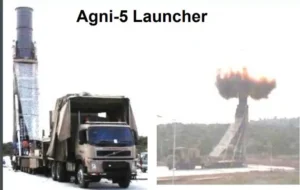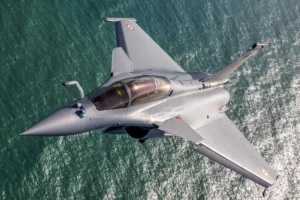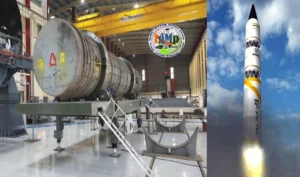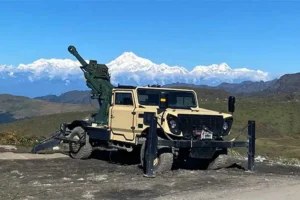Sahasra is all set to begin commercial roll out of Made-in-India semiconductor chips under government’s SPECS plan this week at its Rs 350 crore plant in Bhiwadi.
The year 2000 was a watershed moment for technology in India. As the world feared what the Y2K bug might do to software systems, Indian techies were found to be the most adept and economical to go through millions of lines to code and plug any threats. And the IT outsourcing boom took off in the country as an estimated $300 billion was spent to deal with the problem.
While software services stole the thunder that year after a few decades of toiling in the dark, an electronics manufacturing dream was also taking shape.
Sahasra (thousand, in Sanskrit to denote the turn of the millennium) was founded that year by an IIT Kanpur graduate to fabricate printed circuit boards, assembles LED lighting bulbs, and do several other things to add bits and pieces of value to the supply chain of original equipment manufacturers (OEMs).
Today, at $40 million of annual revenue, the Sahasra group’s biggest and boldest yet is cooking at a plant in a small city named Bhiwadi in Rajasthan’s Alwar district.
After being selected under the government’s Scheme for Promotion of Manufacturing of Electronic Components (SPECS) that has promised to disburse about Rs 12,000 crore of production incentives, Sahasra is planning to start rolling out semiconductor chips this week.
Semiconductor chips are manufactured in two major stages. In the first, wafers of silicon (or other semiconducting material) are sliced from a bar and intricate patterns are drawn on them in a foundry or a fabrication plant. The second stage involves cutting and packaging of those wafers into final chips in an assembling plant, which Sahasra is starting.
When are you starting chip production and what applications will it be for?
We already started trial production in the month of March. However, commercial production is starting this week itself. We should be able to roll out something this week and cut our first commercial invoice next week for this particular financial year.
We are looking to bring in three families of chips. One is the external memory chip. The second is the package called QFN (quad flat no-lead) which can have multiple usages depending upon what purpose it is designed for, such as IoT, automotive and power electronics. And then the third is going to be a small outline package (SOP) that can again have multiple uses in consumer electronics such as lighting. It will take us around 15 to 18 months to develop and start manufacturing internal memories.
What was the thinking behind going from electronics manufacturing to chip production?
We got into the solid state memory business in 2016. For a couple of years till 2018, we were the sole suppliers to Sony. At that time itself, we had also started discussions with them about getting into the semiconductor packaging business. But, in late 2018 or early 2019, they unfortunately decided to quit this market worldwide. However, we decided to continue with the plans even though our relationship with Sony had ended. Luckily, we are the first ones to do it now when semiconductors have suddenly become very important.
Isn’t memory cards a shrinking market?
Micro SD is still used in whatever feature phones are still left in the market as well as certain kinds of tablets. They’re also getting used in IoT applications in drones, cameras, etc. The volumes have gone down drastically. That’s a fact as smartphones prioritise internal memory over external memory. But, the volumes are still enough for us to be able to serve the market. The internal memory technologies are very high-end and it will take us some time to get to that level of maturity
How much are you investing in this facility and what volume will you manufacture?
The overall investment is around Rs 350 crore as part of phase one. We have already committed Rs 160 crore with respect to the plant and machinery. The second phase of investment will be around Rs 190 crore which will be over a period of two to three years, because in this business you have to constantly invest in equipment and multiplying your capacity. All of that is planned for the next couple of years.
The overall capacity that we’ll be able to manage will be about 50-55 million units. It’s not only about how much you will do monthly. It also depends upon the market cycles. But yes, let’s say we will look to roll out about 18 million chips in year one, double that to 36 million in year two and go to about 50-55 million in the third year.
Is it a good time to enter the low-end semiconductor chip market considering there is a supply glut and prices have been falling?
It took about 70-75 years for the entire world’s chip market to a market size of about $550 billion. Now, it is expected that market size will go to about $1 trillion by around 2030. So, it’s doubling the growth in 10 times less the number of years. Number two, what you are calling a glut in the market, I refer to it as a correction.
You should not forget that there was a massive semiconductor shortage as well fairly recently. As a result, everything from cars to smartphones to laptops weren’t available. What happened at that time is that an auto company might have booked three chip suppliers at the same time, hoping that at least one would be able to service the demand. That led to an oversupply as the pandemic eased out. A bubble got created and it had to burst at some point of time.
It’s a good time for us to enter as there is not an excessive demand scenario. It gives us time to stabilise our operations, work on the quality, etc. Secondly, the chips that we are going to come with obviously are not the cutting edge technology. They are low-end chips which is what is the need for India’s electronics manufacturing ecosystem.
We’re looking at where the mass volume is and in which part of the market the purchase decision of the customer happens in India. For example, all the smartphone designs happen in either the US (Apple), South Korea (Samsung) or China. Even if I make a very good internal memory chip in India, will Oppo or Vivo approve that sitting in China? Obviously, they won’t.
Will the micro SD chips be sold branded as Sahasra?
It will be a mixture of Sahasra branded products which will be exported, sales to original equipment manufacturers (OEMs) and e-commerce companies for their private label brands.
What will be the node size of the chips that you are making?
That’s not really relevant to us as size at the wafer level matters. Once a wafer is built, then it is only divided into the two kinds of packaging. One is called advanced packaging and the second is standard packaging. Currently, we are only in standard packaging. You need a lot of expertise behind you to get to advanced packaging such as Nvidia’s artificial intelligence chips.
https%3A%2F%2Fwww.defencenews.in%2F2023%2F10%2Fchinese-smartphone-makers-like-oppo-or-vivo-wont-buy-our-internal-memory-chips-sahasra-ceo%2F








